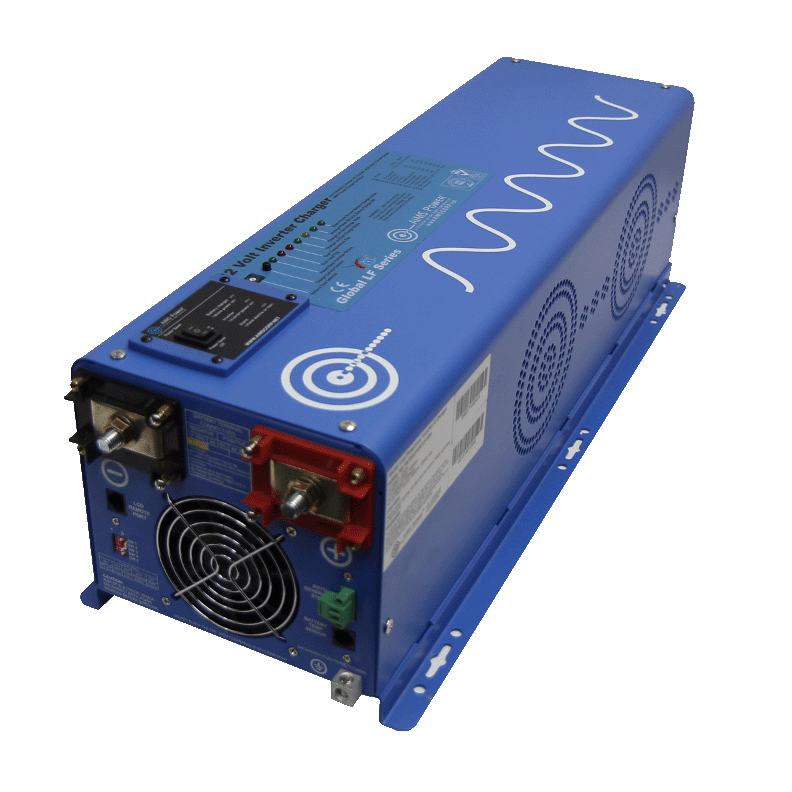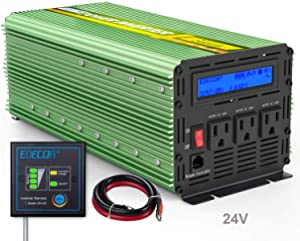 If you’ve spent any time researching solar energy, by now you’ve heard of an inverter. The inverter is like your solar system’s brain. It manages your power flow, controlling two kinds of power – DC—or direct current—power is the kind stored in batteries. It’s also the kind produced by solar panels. You can’t use DC power (directly) to power anything in your home. That’s where your inverter comes in. Everything in your home uses AC—or alternating current—power. And an inverter takes DC power from your panels (or from batteries) and turns it into AC so it can be used for your fridge, lights, TV, and other household appliances.
If you’ve spent any time researching solar energy, by now you’ve heard of an inverter. The inverter is like your solar system’s brain. It manages your power flow, controlling two kinds of power – DC—or direct current—power is the kind stored in batteries. It’s also the kind produced by solar panels. You can’t use DC power (directly) to power anything in your home. That’s where your inverter comes in. Everything in your home uses AC—or alternating current—power. And an inverter takes DC power from your panels (or from batteries) and turns it into AC so it can be used for your fridge, lights, TV, and other household appliances.
How is an off-grid inverter different from a grid-tied inverter?
A grid-tied inverter takes DC power from solar panels, turns it into AC, and sends it into the grid for credit.
Grid-tied inverters are simpler and easier to wire since there are usually only two main components—the inverter itself and your solar panels. (Some grid-tied systems are starting to incorporate energy storage, but most don’t have any batteries at all.)
An off-grid inverter needs a battery bank to function.
Here’s how it works: your solar panels feed DC power into the batteries. Then your inverter takes that power and “inverts” it, creating AC power for your home. This works essentially like a miniature power grid. The battery bank gets recharged by your solar panels and a charge controller, and by a backup generator. As you might imagine, off-grid systems are more complicated, thanks to additional components like the charge controller, battery monitor, and additional AC and DC circuit breakers. All of these things tend to make off-grid systems more difficult to wire and install.
It can also be a challenge to buy off-grid equipment because there are a lot of associated accessories: remote controls, battery monitor, breakers and enclosures, surge suppressors, and so on.
Picking the right parts can be confusing enough—but there’s no more critical decision than buying the right inverter.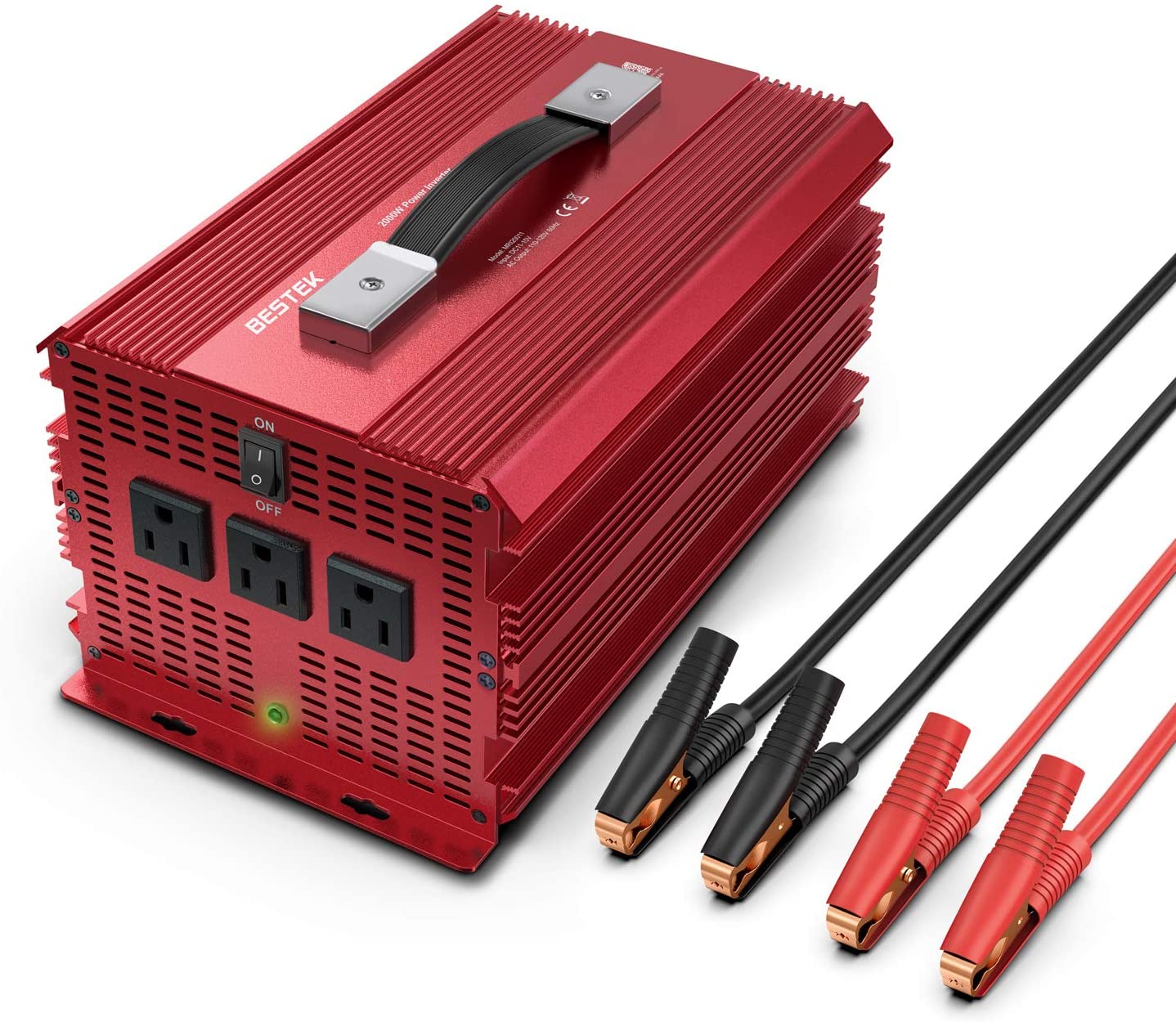 More Info on Off-Grid Inverters
More Info on Off-Grid Inverters
Since the inverter is often installed in an out of the way location near the batteries, an inverter remote control or display in the living area is useful to keep an eye on the system. Some inverters even have the ability to monitor the system remotely via the web. This is very useful for part time locations that you are not always there to keep an eye on.
Many inverters can be stacked to increase either the voltage or the current, or both. This allows you to use multiple inverters in a master/slave configuration, automatically turning on only the inverters as needed, conserving battery power, as you are not providing power to the second inverter when it is not needed.
What’s the difference between a modified and pure sine wave off-grid inverter?
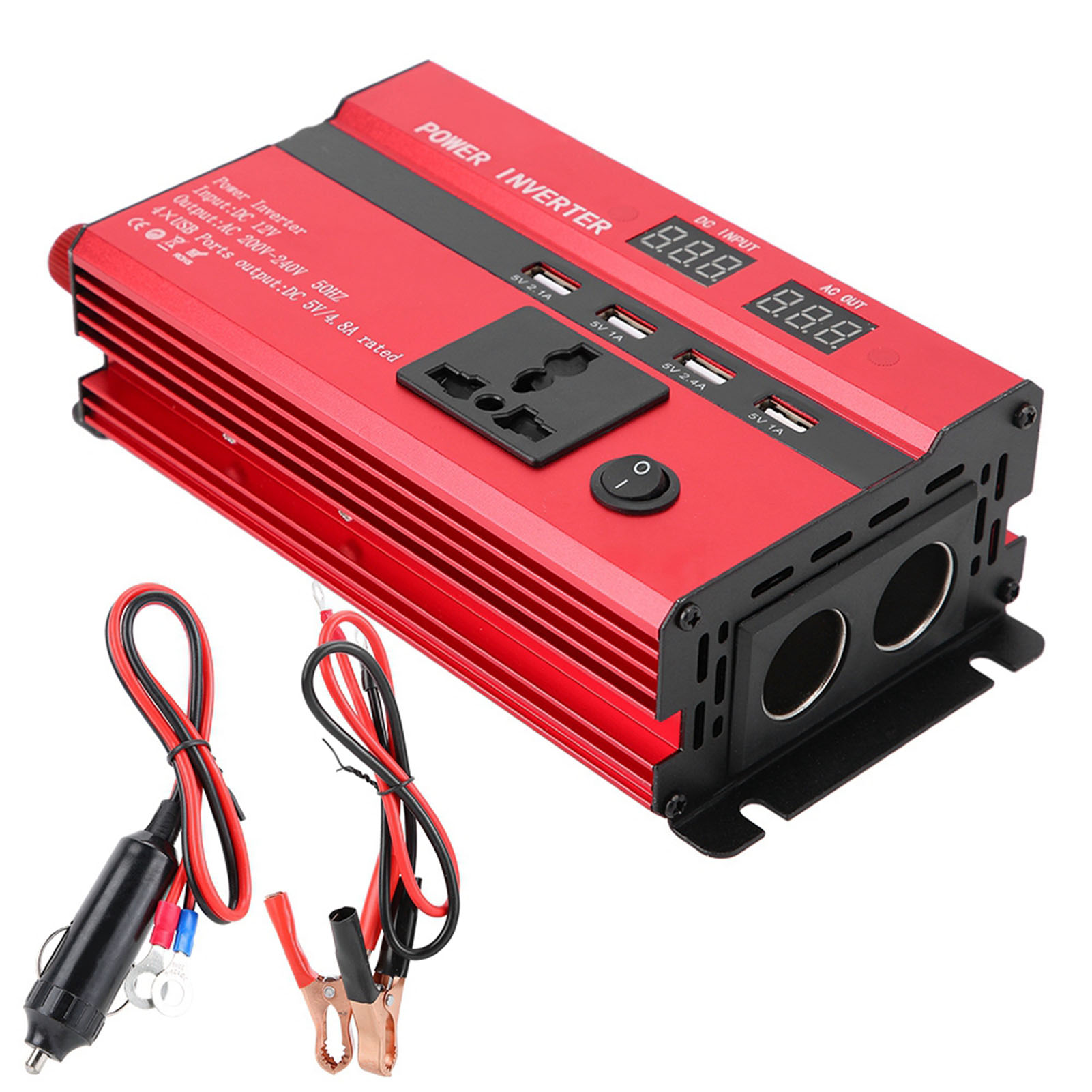 Modified sine wave off-grid inverters are a perfect choice if you are putting together a DIY emergency solar kit or for a cabin with modest electrical needs. Any more modern electronic loads like a HD television or something with a high electrical surge likely aren’t good choices for modified sine wave inverters.
Modified sine wave off-grid inverters are a perfect choice if you are putting together a DIY emergency solar kit or for a cabin with modest electrical needs. Any more modern electronic loads like a HD television or something with a high electrical surge likely aren’t good choices for modified sine wave inverters.
Modified sine wave inverters can cause issues with certain appliances. Motors, pumps and compressors run hotter and wear out more quickly. Certain sensitive appliances like computers can be damaged, or they may not work at all. These inverters also typically cause background noise on a stereo, and reduced video and audio quality for certain TVs.
Off-Grid Modified Sine Wave Inverters
Best for simplest systems
Typically inexpensive
Fine for older TVs, incandescent lights, motors with brushes
Generally not good with: electronics, audio, induction motors, rechargeable batteries or digital clocks
Off-Grid Pure Sine Wave Inverters
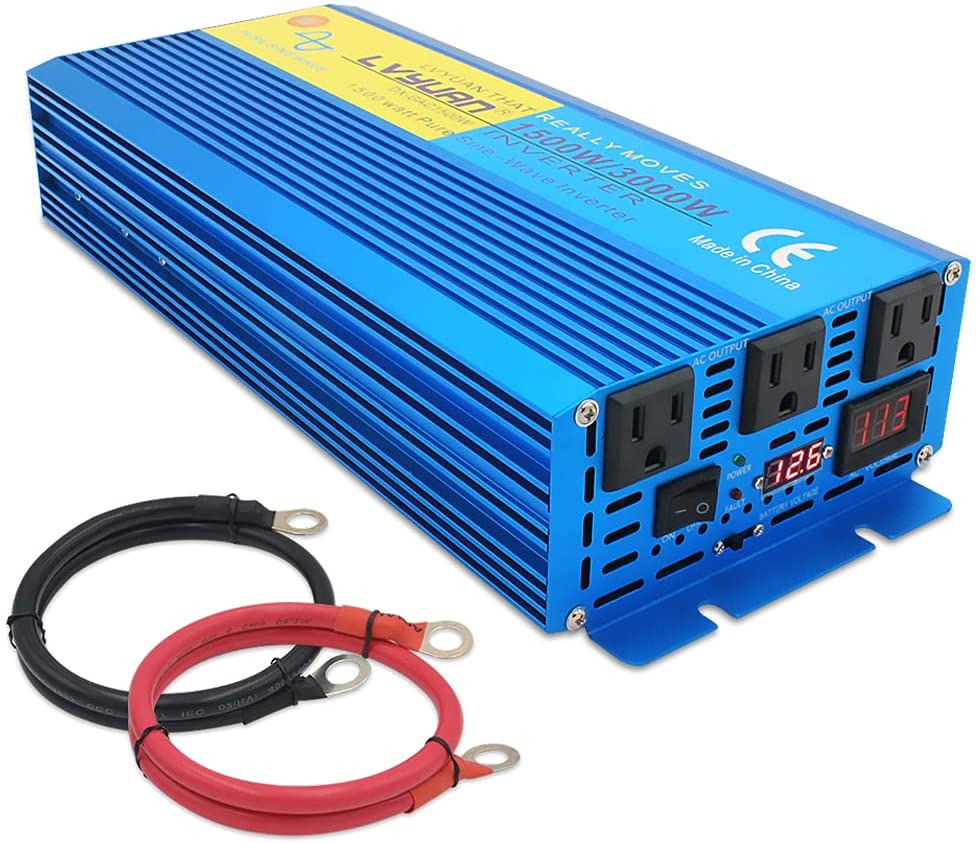 Preferred for off-grid homes or larger solar systems
Preferred for off-grid homes or larger solar systems
Generally more expensive (but prices continue to fall)
Necessary for electronics, florescent lights and dimmers, inductive loads to operate at their best
Mandatory for grid-tied systems
Pure sine wave inverters work in nearly all types of off-grid solar systems, depending on the requirements of the system of course. Generally pure sine wave inverters are used in larger off-grid solar systems, but they are also for appropriate for smaller systems—like mobile applications. One important requirement to determine when trying to identify an inverter is the types of loads it will be powering.
If you are going to be powering sophisticated electronics, like a fancy new television or gaming console, a pure sine wave inverter is the way to go. Pure sine wave inverters come in all sizes (from 100W on up to over 7000W) and can be stacked to accommodate larger loads in more complex off-grid solar systems—no matter if you have a 12V, 24V or 48V system. The technology behind pure sine wave inverters is innovating continually and they are becoming more versatile, lightweight and coming with increasing programmable options.
How to Pick the Best Off-Grid Inverter
Think About Size – The first thing to think about is how much power you need. Fortunately, sizing off-grid inverters is straightforward if you know what appliances you’re going to use. Add up the wattage of all your lights and appliances to calculate the number of watts you’d need if everything was used all at once. Most appliances run on 120Vac.
Pure sine wave inverters deliver higher quality power output, similar to (or better than) our power grid. Modified sine wave inverters are cheaper, but they deliver lower-quality power output.
Need a quick way to tell the difference? Look at your inverter’s total harmonic distortion (THD) rating. THD is an indicator of power quality output and will be listed on the spec sheet of any decent inverter. Rule of Thumb To avoid running into trouble, choose a pure sign wave inverter with THD of 5% or less.
Here are some technical specs to consider:
Efficiency. This is a measure of how much power from the batteries your inverter delivers to your home when it’s operating in perfect conditions. A good peak efficiency rating is around 94% to 96%.
Self-consumption, or no-load current draw. How much power will your inverter consume just sitting there? Obviously you want this to be as low as possible.
Surge capacity. How much short-term overload can the inverter handle before it “trips?” Some appliances, like pumps or fridges, need as much as 2x–3x their running power to start up.
Battery charger output. Many off-grid inverters include a battery charger, which is used to recharge your batteries during the winter months with a backup generator. The battery charger will have a rating, usually measured in amps. Most decent off-grid inverters will have a battery charger in the range of 50-100 amps DC.
Temperature range. Inverters are sensitive to extreme heat. Pay careful attention to the temperature range if you plan on installing your system in your garage or anywhere it could be exposed to temperature extremes.
Warranty. Warranties start at 1 year and typically range from 3-5 years, with a few manufacturers offering a 10 year warranty extension option.
You can normally find information on all these features on the product spec sheets. Check with your solar tech for help comparing and picking the right inverter.
Your inverter may need special features. Look into these ones:
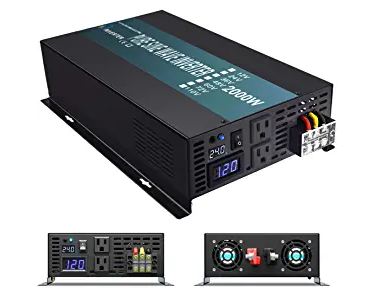 Battery charger. A charger allows your system to be charged from a backup AC generator. Most bigger inverters include this; these are called “inverter/chargers.”
Battery charger. A charger allows your system to be charged from a backup AC generator. Most bigger inverters include this; these are called “inverter/chargers.”
Grid-tied capability. Some off-grid inverters have the added capability of feeding power into the grid, here are a few examples:
Outback FXR/VFXR
Outback Radian
Schneider XW+
SMA Sunny Island
This capability is useful if the grid becomes available in the future, or if you are setting up a grid-tied system with battery backup.
Automatic generator start. Usually you’ll need an add-on accessory for this, although some inverters or charge controllers can take care of it.
Read Up on the Manufacturer
Knowing about the inverter manufacturer is also important. Check into their history and reputation. Off-grid inverters need to be on all day, 365 days a year, for several years at a time—so you’ll want to choose one from a manufacturer with a reputation for reliability.
Off-grid inverters have a few different certifications required in the US, for safety and also to ensure code compliance.
Inverters for your home need to be UL 1741 listed. Mobile inverters for boats and RVs should carry a UL 458 certification. There are a few other requirements for different applications such as UL 1778 for uninterruptible power supplies and KKK-Off-Grid Inverters Working with 12, 24, or 48V Battery Banks
Once the charge controller has charged up the battery bank, the off-grid inverter converts the 12, 24, or 48VDC battery bank to AC voltage. The AC output depends on your requirements. In North America, most residential and business use is 120V single phase. Depending on how you wire the output of the inverter, and which inverter you get, you could have both 120V and 240V as an output. You need to determine what your loads require, and select and configure the inverter accordingly.
Most off-grid inverters can not sell extra power back to the grid, with the exception of inverters like the Outback FXR series inverters or the Schneider XW+ inverters. However, an inverter/charger can connect to the grid (if available) to act as a battery charger. For instance, if you have a boat or RV with an inverter/charger, when you connect to shore power, you can use the AC power from the electric grid to charge your battery bank when the solar doesn’t provide enough power. But that AC connection is one-directional, it will only take from the grid, not send back. Likewise, you can often connect a generator to the AC input of an inverter/charger to top off the batteries when needed. This is a common configuration for off-grid homes that need more power in the winter than the sun can provide.
When selecting an inverter, you must determine what your maximum wattage draw will be if all of your appliances that may be on at the same time, are on. If you have an 800W well pump, a 100W fridge, five 10W lights, and a 50W laptop, you need to add the wattages together to get at least a 1,000W inverter. You also have to make sure the inverter is able to handle the surge as motors turn on. For example, if your fridge and well pump both turned on at once, the surge could be three or four times the rated wattage. You must be sure the inverter can handle that. Inverters are rated in both continuous wattage and surge.
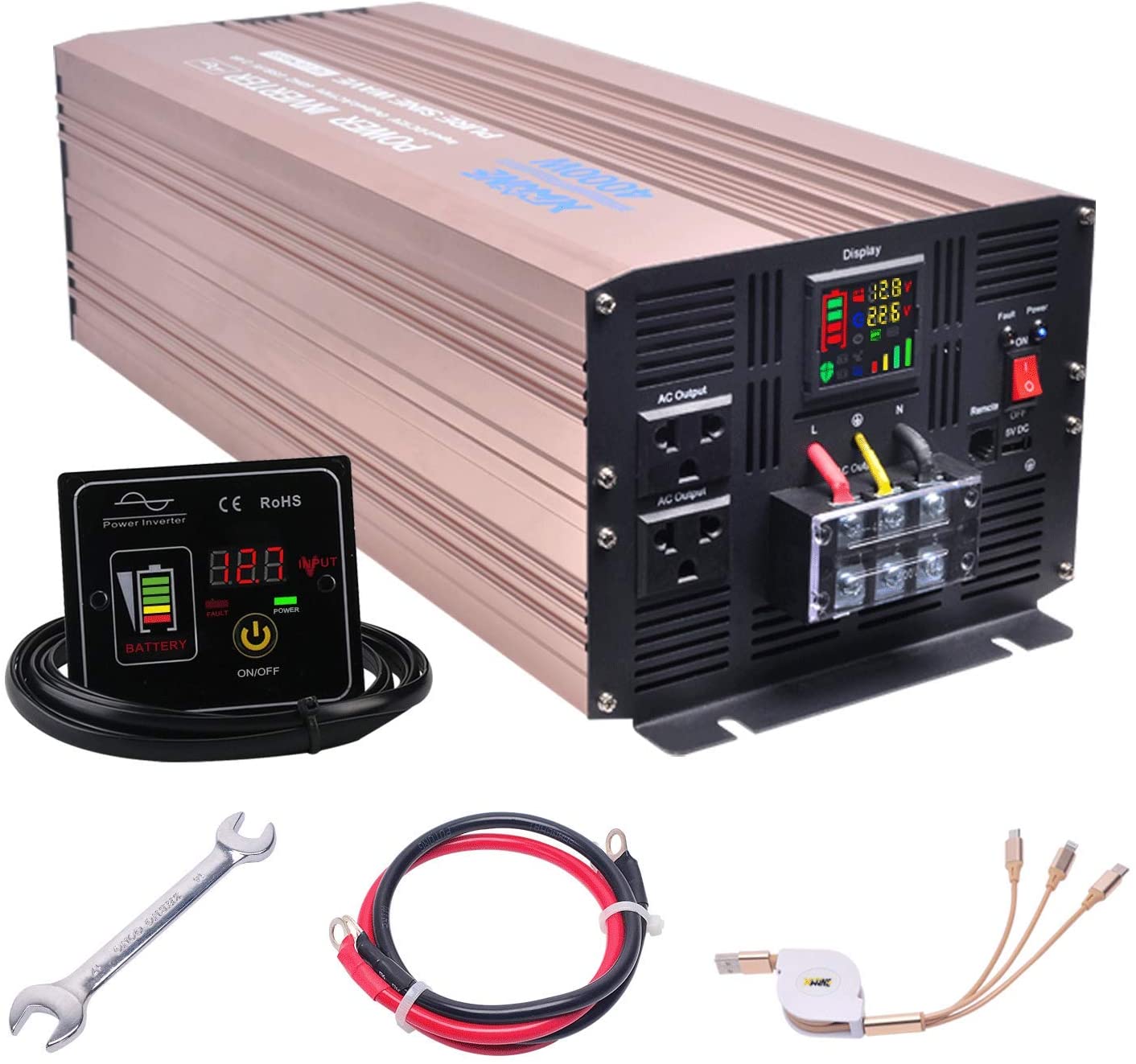 Additionally, you need to select the battery bank size and select the inverter to match. Inverter voltage is not field selectable, they are either 12V, 24V, or 48V, they cannot do all of them, just one.
Additionally, you need to select the battery bank size and select the inverter to match. Inverter voltage is not field selectable, they are either 12V, 24V, or 48V, they cannot do all of them, just one.
Battery based inverters have a lot of options to choose from. Not all of the inverters have all of the features, so you need to decide which features are required or desired, and select the inverter based on which has them.
Some of the features include the ability to charge the battery bank from an AC source like the grid or a generator; even automatically starting the generator to power the built-in AC charger in the inverter to charge up the deep cycle batteries when they are low, and turning it off when they are charged. Some can automatically use the generator to assist with high loads, reducing the need to oversize the inverter for occasional heavy use. Some examples include the Schneider AGS Remote Generator Start, Magnum ME-AGS-N Automatic Generator Start, and the inverter-model-independent Morningstar’s Relay Driver and Solar Converters’ Generator Starter.

